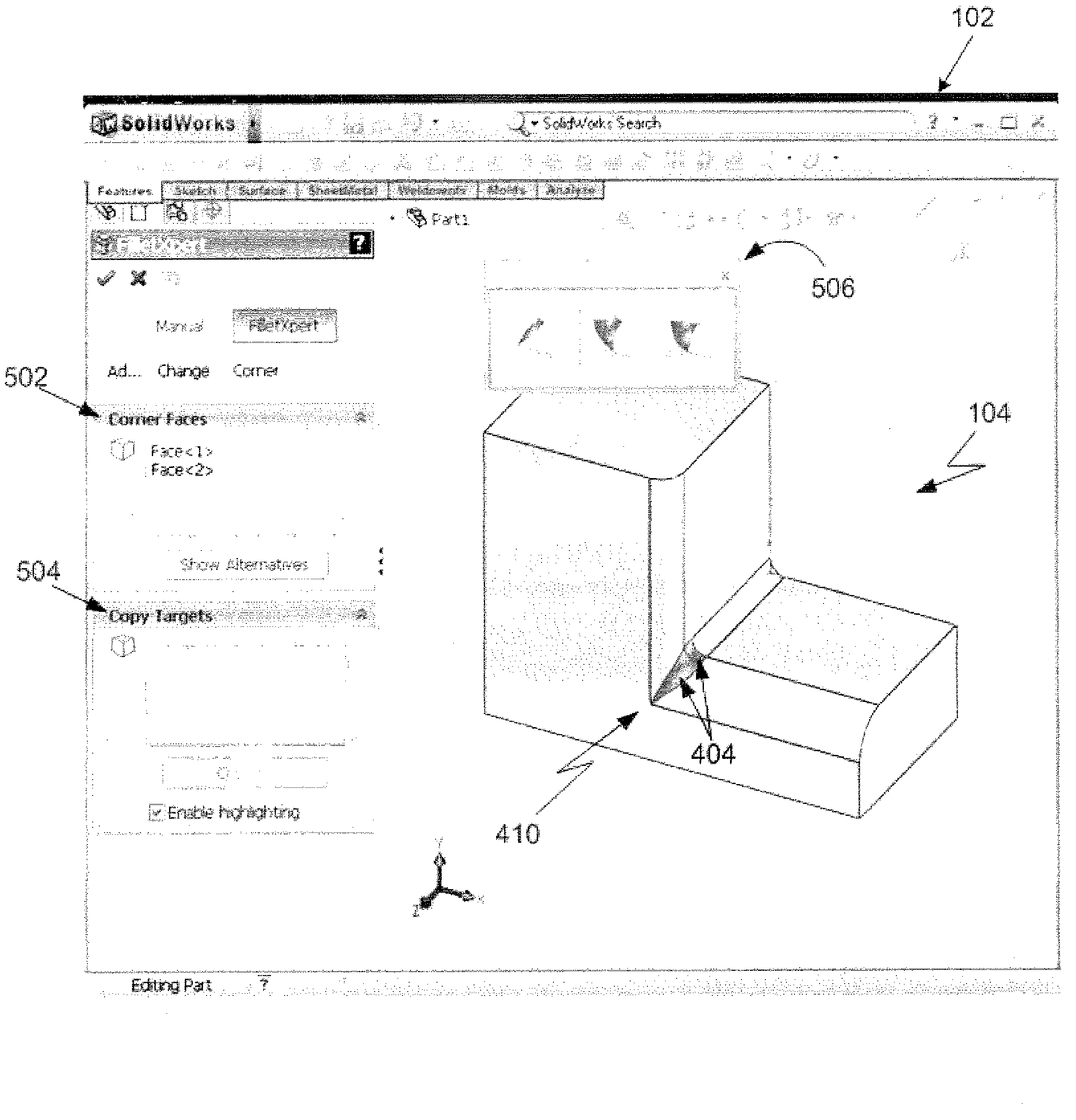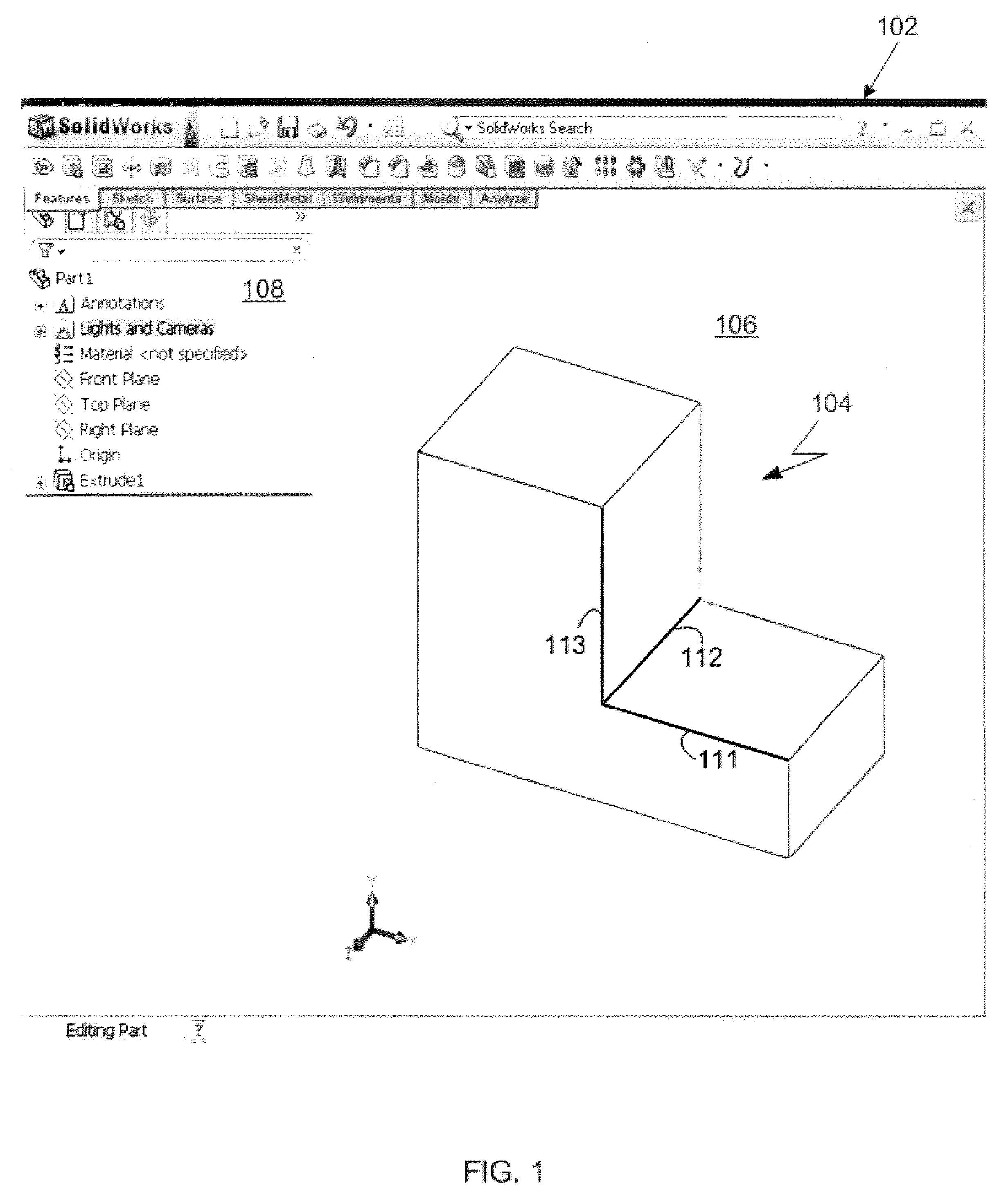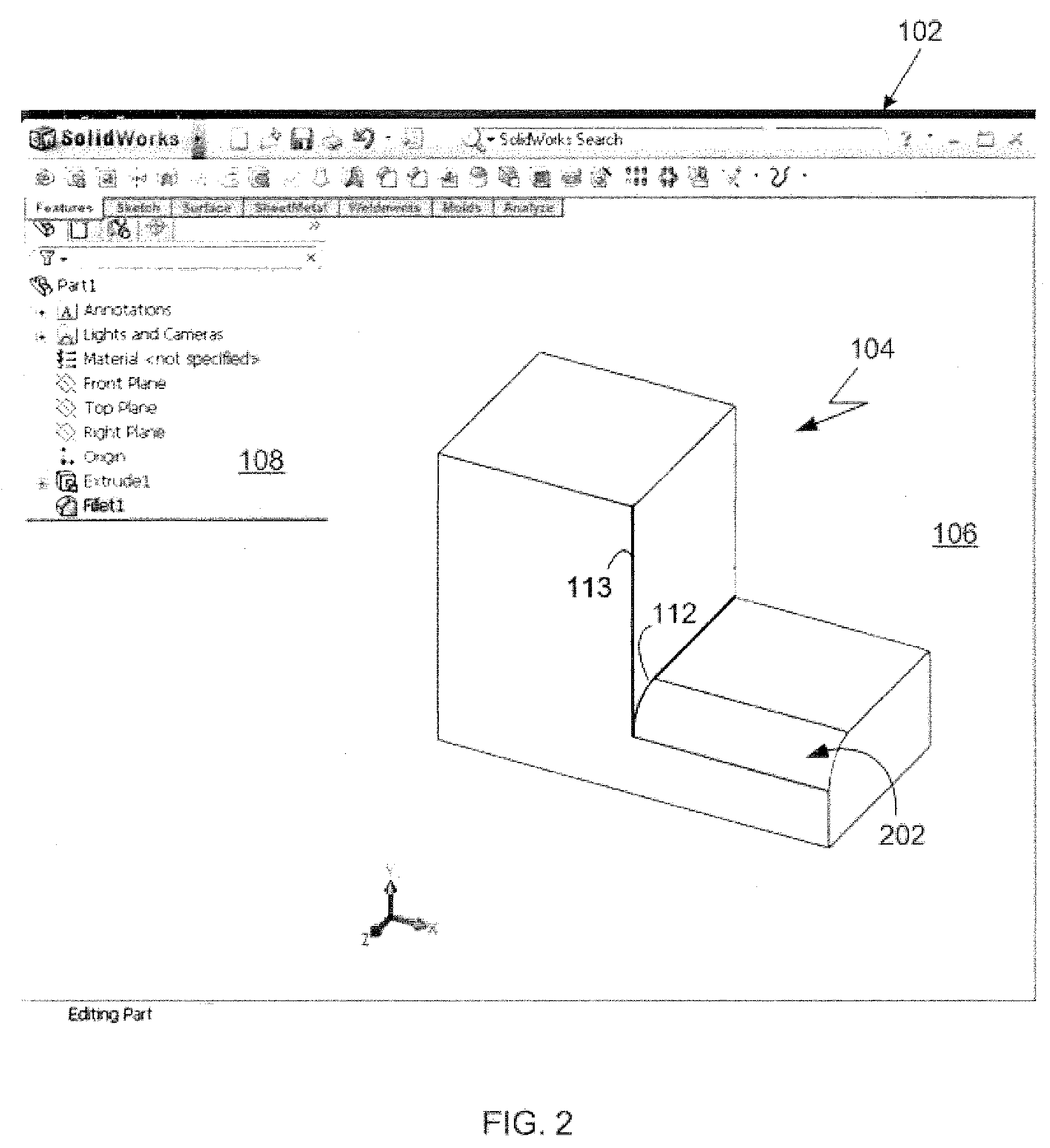Implicit feature recognition for a solid modeling system
a solid modeling system and feature recognition technology, applied in the field of computer-aided design (cad), can solve problems such as laborious, inaccurate geometry correction, and physical incorrect parts, and design engineers may be required to spend an enormous amount of time and effor
- Summary
- Abstract
- Description
- Claims
- Application Information
AI Technical Summary
Benefits of technology
Problems solved by technology
Method used
Image
Examples
Embodiment Construction
[0029]The present invention recognizes that a collection of features that are positionally interrelated form an implicit feature, creates a new feature to replace geometry generated by the collection of features, and gives a user explicit control over the new feature. Hereinafter, the new feature that generates geometry that replaces geometry generated by the collection of features will be referred to as an explicit feature.
[0030]Referring now to FIG. 1, a window 102 displayed on a computer monitor is shown. The window 102 is generated by modeling software executed by a computerized modeling system, an example of which is later shown with reference to FIG. 9. The window 102 is a conventional computer-generated window that can be programmed by one of ordinary skill in the art using conventional, commercially available, software programming tools, such as those available from Microsoft Corporation of Redmond, Wash.
[0031]A computer-generated 3D model 104 is displayed within a modeling ...
PUM
 Login to View More
Login to View More Abstract
Description
Claims
Application Information
 Login to View More
Login to View More - R&D
- Intellectual Property
- Life Sciences
- Materials
- Tech Scout
- Unparalleled Data Quality
- Higher Quality Content
- 60% Fewer Hallucinations
Browse by: Latest US Patents, China's latest patents, Technical Efficacy Thesaurus, Application Domain, Technology Topic, Popular Technical Reports.
© 2025 PatSnap. All rights reserved.Legal|Privacy policy|Modern Slavery Act Transparency Statement|Sitemap|About US| Contact US: help@patsnap.com



